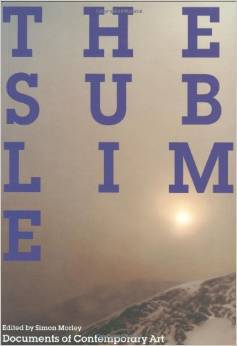In the contemporary world, where technology, spectacle, and excess seem to eclipse nature, the individual, and society, what might be the characteristics of a contemporary sublime? If there is any consensus, it is in the idea that the sublime represents a testing of limits to the point at which fixities begin to fragment. This anthology examines how contemporary artists and theorists explore ideas of the sublime, in relation to the unpresentable, transcendence, terror, nature, technology, the uncanny, and altered states. Providing a philosophical and cultural context for discourse around the sublime in recent art, the book surveys the diverse and sometimes conflicting interpretations of the term as it has evolved from the writings of Longinus, Burke, and Kant to present-day writers and artists. The sublime underlies the nobility of Classicism, the awe of Romantic nature, and the terror of the Gothic. In the last half-century, the sublime has haunted postwar abstraction, returned from the repression of theoretical formalism, and has become a key term in critical discussions of human otherness and posthuman realms of nature and technology.
- / Article author
- / Article author
- / Article author
- / Article author
